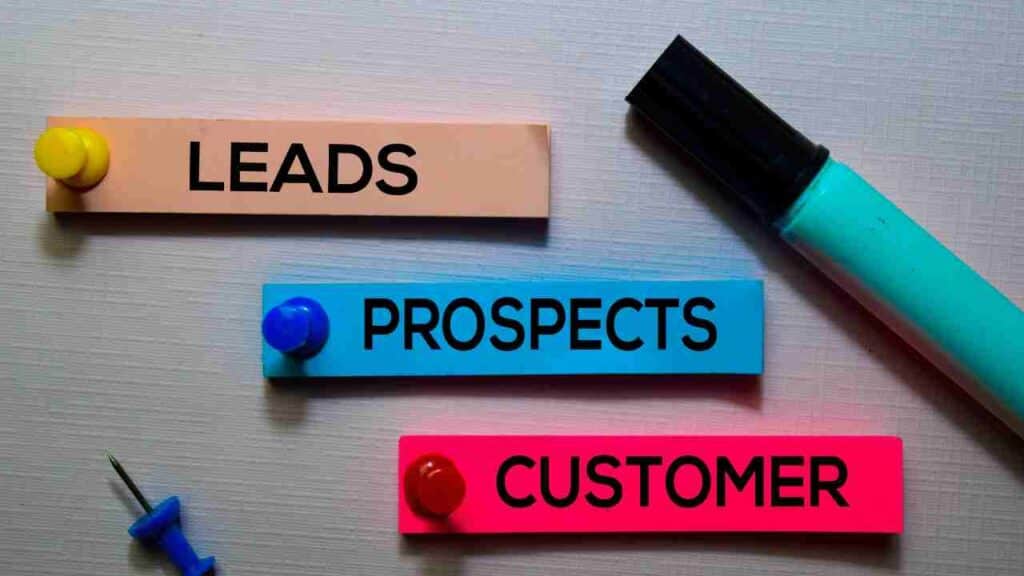Merging Third-Party Resources with CRM

Get Your FREE 14-Day Trial and Take Your Business To The Next Level with an All-In-One Sales and Marketing Platform for businesses, agencies and marketers.
As businesses strive to streamline their operations and improve customer relationships, the integration of third-party resources with Customer Relationship Management (CRM) systems has become increasingly important. By merging these resources, businesses can enhance their CRM capabilities, gain valuable insights, and ultimately drive growth. In this article, we will explore the benefits of merging third-party resources with CRM, provide examples of successful integrations, and discuss the key considerations for implementing such integrations.
The Benefits of Merging Third-Party Resources with CRM
Integrating third-party resources with CRM can offer numerous advantages for businesses. Let’s delve into some of the key benefits:
1. Enhanced Data Management
By merging third-party resources with CRM, businesses can centralize their data and gain a comprehensive view of their customers. This integration allows for the consolidation of customer information from various sources, such as social media platforms, email marketing tools, and e-commerce systems. With a unified view of customer data, businesses can better understand their customers’ preferences, behaviors, and purchase history.
For example, a clothing retailer can integrate their CRM system with social media platforms like Facebook and Instagram. This integration enables the retailer to capture customer interactions, such as likes, comments, and shares, and link them to individual customer profiles within the CRM. By analyzing this data, the retailer can identify trends, personalize marketing campaigns, and make data-driven decisions to improve customer satisfaction and drive sales.
2. Improved Customer Engagement
Integrating third-party resources with CRM can significantly enhance customer engagement. By leveraging data from various sources, businesses can create personalized and targeted marketing campaigns that resonate with their customers. For instance, by integrating CRM with email marketing tools, businesses can send tailored emails based on customer preferences, purchase history, and browsing behavior.
Furthermore, integrating CRM with customer support platforms can enable businesses to provide a seamless and personalized customer experience. When a customer contacts support, the support agent can access the customer’s complete history, including past purchases, interactions, and preferences. This holistic view empowers the agent to provide relevant and timely assistance, leading to improved customer satisfaction and loyalty.
3. Streamlined Workflows
Merging third-party resources with CRM can streamline workflows and improve efficiency within an organization. By integrating CRM with project management tools, businesses can seamlessly transfer customer information and project details between systems. This integration eliminates the need for manual data entry and reduces the risk of errors or duplications.
For example, a marketing agency can integrate their CRM system with project management software. When a new client is onboarded, the agency can automatically create a project within the project management tool, assign tasks to team members, and set deadlines. This integration ensures that all relevant information is readily available to the team, enabling them to collaborate effectively and deliver projects on time.
Successful Examples of Merging Third-Party Resources with CRM
Several businesses have successfully merged third-party resources with CRM to enhance their operations and achieve significant growth. Let’s explore a few notable examples:
1. HubSpot CRM
HubSpot, a leading provider of inbound marketing and sales software, offers a CRM platform that seamlessly integrates with various third-party resources. HubSpot CRM allows businesses to connect their email marketing tools, social media platforms, and customer support systems to gain a holistic view of their customers.
For instance, HubSpot CRM integrates with Gmail, allowing users to track email interactions and automatically log them within the CRM. This integration enables sales teams to prioritize leads, track email engagement, and gain insights into customer behavior. By merging these resources, businesses can streamline their sales processes and improve customer relationships.
2. Salesforce CRM
Salesforce, a global leader in CRM solutions, offers a wide range of integrations with third-party resources. Salesforce CRM allows businesses to connect with popular tools such as Mailchimp, Google Analytics, and Zendesk, among others.
For example, by integrating Salesforce CRM with Mailchimp, businesses can synchronize customer data and email campaign metrics. This integration enables businesses to segment their customer base, personalize email content, and track the effectiveness of their campaigns. By leveraging these integrations, businesses can optimize their marketing efforts and drive higher conversion rates.
3. Shopify CRM
Shopify, a popular e-commerce platform, offers a CRM system that integrates seamlessly with various third-party resources. Shopify CRM allows businesses to connect with email marketing tools, social media platforms, and inventory management systems.
For instance, by integrating Shopify CRM with Facebook Ads, businesses can create targeted ad campaigns based on customer behavior and purchase history. This integration enables businesses to reach their customers with personalized ads, increasing the likelihood of conversions and driving revenue growth.
Key Considerations for Implementing Third-Party Resource Integrations
While merging third-party resources with CRM can offer significant benefits, businesses should consider the following factors when implementing such integrations:
1. Data Security and Privacy
When integrating third-party resources with CRM, businesses must ensure the security and privacy of customer data. It is crucial to choose reputable third-party providers that adhere to strict data protection regulations and have robust security measures in place. Additionally, businesses should implement proper data encryption and access controls to safeguard customer information.
2. Compatibility and Scalability
Before integrating third-party resources with CRM, businesses should assess the compatibility and scalability of the systems involved. It is essential to choose resources that seamlessly integrate with the CRM platform and can accommodate future growth. Scalable integrations ensure that businesses can continue to leverage their CRM system effectively as their operations expand.
3. Training and Support
Implementing third-party resource integrations may require training and support for employees. It is crucial to provide comprehensive training to ensure that employees understand how to utilize the integrated systems effectively. Additionally, businesses should have access to reliable support channels to address any technical issues or questions that may arise during the integration process.
Get Your FREE 14-Day Trial and Take Your Business To The Next Level with an All-In-One Sales and Marketing Platform for businesses, agencies and marketers.
Merging third-party resources with CRM offers businesses numerous benefits, including enhanced data management, improved customer engagement, and streamlined workflows. Successful examples such as HubSpot CRM, Salesforce CRM, and Shopify CRM demonstrate the value of integrating third-party resources to drive growth and improve customer relationships.
However, businesses must consider factors such as data security, compatibility, and training when implementing third-party resource integrations. By carefully evaluating these considerations and choosing the right resources, businesses can unlock the full potential of their CRM system and gain a competitive edge in today’s dynamic business landscape.
Discover the power of merging third-party resources with CRM with SaasExpert.ca – Your All-In-One Sales and Marketing Platform for small businesses, agency owners, and marketers.
Check out this article about “Joining Third-Party Solutions with CRM” right here.
Frequently asked questions about Merging Third-Party Resources with CRM.

1️⃣ Why should I merge third-party resources into my CRM platform?
This is an essential starting point. 📍 When you merge third-party resources like marketing automation, e-commerce platforms, or even social media management tools into your CRM, you’re supercharging its capabilities. You can not only collect customer data but also act on it within the same platform, optimizing your efforts.
For example, by integrating an email marketing tool, you can create and execute campaigns without ever leaving your CRM, making the process way more efficient. You could also track real-time data about customer interaction with these campaigns, enabling you to make more informed business decisions.
2️⃣ What steps should I take to make sure the third-party resources and my CRM are fully compatible?
Great question. Compatibility is a major concern, almost like ensuring two puzzle pieces fit perfectly. 🧩 To start with, check if your CRM platform has an “app store” or a list of recommended third-party resources. Usually, these are guaranteed to be compatible.
Secondly, use any available free trials to test the third-party resource inside and out, especially focusing on how it integrates with your CRM. Take note of any friction points or data syncing issues. Lastly, consult with the third-party vendor and your CRM provider to address any compatibility concerns you may have.
3️⃣ What should I look out for in terms of data security when merging third-party resources?
Data security is paramount; it’s the digital vault of your business. 🔐 Before adding any third-party resources, you’ll want to check that they adhere to industry standards and regulations. Whether it’s GDPR for European clients or HIPAA for healthcare data, the third-party resource must comply with legal requirements relevant to your business.
Also, take the time to read through their privacy policies and perhaps even consult with cybersecurity experts to ensure that the integration won’t introduce any security vulnerabilities.
4️⃣ Can merging third-party resources make my CRM system slower?
Ah, performance—the Achilles’ heel of any software-based operation! 🏃 Yes, adding more functions via third-party resources could potentially impact the speed and responsiveness of your CRM system. However, this is often negligible and offset by the added capabilities you gain.
It’s always a good idea to keep an eye on performance metrics after you’ve integrated new resources, and most quality CRM systems are built to handle these kinds of extensions without any significant degradation in performance.
5️⃣ How can I ensure that my team adapts well to the new changes after merging third-party resources?
Change management is often an overlooked aspect, but it’s critical for success. 🌱 When you introduce new functionalities, you’re also introducing a learning curve. The best way to ease this transition is through proper training. Thankfully, most third-party resource providers offer in-depth user training and documentation.
Remember, it’s not a race; you can roll out these new features in phases, allowing your team to get comfortable with the changes. Frequent communication is also key. Keep lines open for any questions or feedback your team might have, and use this input to make the integration process as smooth as possible.






